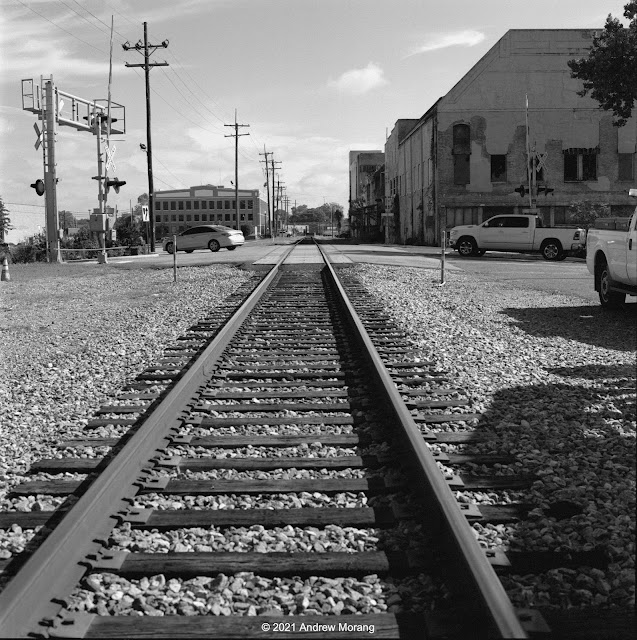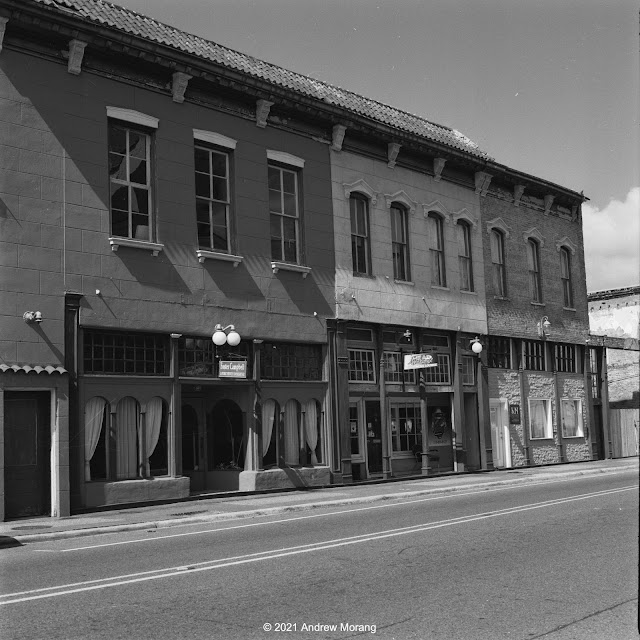Dear Readers, Happy 2022 to you all. I hope you are all prosperous, safe, and optimistic this year.  |
| Kansas City Southern rail bridge over the Ouachita River, Monroe (Tri-X film, Hasselblad 501CM camera, 80mm ƒ/2.8 Planar-CB lens, green filter) |
Monroe, formerly Fort Miro and now the seat of Ouachita Parish, is the "big city" of north central Louisiana. The family and I used to attend theater productions at the Monroe Civic Center and have flown out of MLU airport, but otherwise have not spent much time there. Readers may remember that in 2020, I followed part of historic US 80 through the northern part of the city (it was not too exciting).
A Virginia friend asked about someplace to explore, and I suggested Monroe. We drove there on a sunny warm day and headed to the Ouachita River at the historic city core.
"The Ouachita-Black Rivers Navigation Project provides dependable year-round commercial navigation from the mouth of the Black River to Camden, Arkansas, a distance of approximately 330 river miles." (from the Ouachita River Valley Association)
I showed my Hasselblad to one of the railroad workers, and he was fascinated to look through the waist-level finder and see that the view was reversed left to right. Maybe I made a film convert.
South Grand Street may have once been the main commercial strip paralleling the river. The area looks reasonably clean and well-maintained. Empty lots show where old commercial buildings have been demolished. But the standing buildings have businesses or occupation.
The side of buildings that faced the railroad were typically a bit rough or industrial. You definitely see this when you take the Amtrak through the Northeast Corridor.
These photographs are from Kodak Tri-X 400 film, developed by Northeast Photographic in Bath, Maine. I exposed them at EI=320, all hand-held. The light was bright and glarey.
This ends our short tour of the riverfront region of Monroe. Standby for Part 2.







2 comments:
Marvelous detail and textures.
I was just talking to Rand last night about your work! We took a detour through downtown Monroe once, and it does hold some great buildings! I like the railroad bridge, and it is one of my favorite views on the river.
Post a Comment